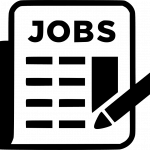The Healthcare industry is one of the most competitive sectors in the world. It’s also one with a lot of opportunity for technology solutions as they become more and more necessary to provide a competitive advantage. The most important trend in Healthcare currently are web apps, which are becoming increasingly critical because they allow you to interact with your patients remotely and make them feel like they’re being taken care of by someone at home.
Web apps can be used for everything from scheduling appointments to ordering prescriptions to communicating with patients via text or email. They can even be used for coordinating care between different doctors and hospitals, a feature that helps reduce costs while improving efficiency.
Today, spending in the Healthcare industry is growing at a rapid pace, with more than $3 trillion spent by consumers in the United States alone. According to a study, the global healthcare IT market is anticipated to grow at a CAGR of 19.8% between 2022 and 2027, from $394.6 billion to $974.5 billion. This means that there is huge demand for web applications which can help companies manage their customers’ needs more effectively and efficiently.
How do Web Apps benefit the Healthcare Industry?
In the Healthcare industry, web applications can be a powerful tool for both providers and patients. Providers can use web apps to create detailed records of patient interactions, which can help them manage their caseloads more efficiently.
For example, if a provider creates an app that allows them to enter data about each patient’s visit in one place, they will be able to quickly refer back to this record when necessary.
In addition, patients will benefit from having access to important information on their phone or tablet rather than having to remember where they have stored it in their office files. This means that they won’t have to waste time looking for paperwork or waiting at reception desks when they need medical records or prescriptions refilled.
Web applications offer a number of benefits for the healthcare industry over traditional methods of communication, including:
- greater privacy and security by ensuring that sensitive information is never shared with unauthorized parties.
- reduced training costs by allowing users to learn online rather than in person or over the phone.
- lower overhead costs by eliminating the need for costly hardware and software maintenance.
What are the ways that web apps have impacted the healthcare industry?
- AR Technology for Surgical Assistance:
Web Apps with AR technology are being used to improve the quality and efficiency of surgical assistance in the healthcare industry. The use of AR technology in web apps has been shown to be effective in assisting doctors during surgeries, reducing their workloads, and allowing them to spend more time with patients.
- IoT Technology for Monitoring Patients:
Web Apps with IoT technology for monitoring patients allow doctors to easily monitor them while they are at home or even while they are traveling. This relieves the doctor of a lot of stress while also saving them money.
These web apps use sensors to measure vital signs and other data to help doctors and nurses keep track of how a patient is doing. This technology can also be used to send alerts when something is wrong, such as if a patient’s vitals deteriorate or if their blood pressure spikes.
It has also resulted in a reduction in medical errors caused by human error. It also allows doctors to monitor their patients more closely without having to visit them at a clinic, hospital, or personally.
- Shop Medicines Online:
Shopping for medicines online through web apps has become more popular in the healthcare industry. It has been proven that patients who are able to order their medicine from home are more likely to remain on their medications and achieve better outcomes.
Also, the users can browse through different brands of drugs and compare prices before making a purchase. It also allows for easier tracking of the medicine’s progress so that patients can see how much longer they need to wait before taking another dose.
- Insurance Claim and Verification:
In real-time, web apps are helping the healthcare industry manage insurance claims and verification. Web apps can be used to manage insurance claims by simplifying the process and streamlining it into a point-and-click interface that anyone can use.
The system will automatically pull all current information into one spot, allowing changes or updates to be made in real time. The system will also allow patients and providers to keep track of payment history, which is crucial when dealing with insurance companies.
With a web app, there are no more paper forms or filing cabinets full of documents; everything is stored in a central location where it can be accessed at any time.No one has to worry about losing important documents or forgetting where they are stored.
This makes it easier for both doctors and patients because there is less stress involved with paperwork and filing systems than ever before.
Why should you consider Integrass for web application services in the healthcare industry?
In today’s world, it’s important to make sure that your web applications are up-to-date and secure. When it comes to healthcare, you need to be able to trust your development team.. And that’s where Integrass comes in.
We’re not just web application services experts; we’re also experts in providing the best solutions for the healthcare industry. We develop applications (web and mobile) and expert resources that integrate with EMRs, billing software, and other vital systems that keep hospitals and medical offices running smoothly.
We know how important reliable, secure and functional web apps are to both patients and providers, and we know how important they are to you! Get in touch with Integrass today!









